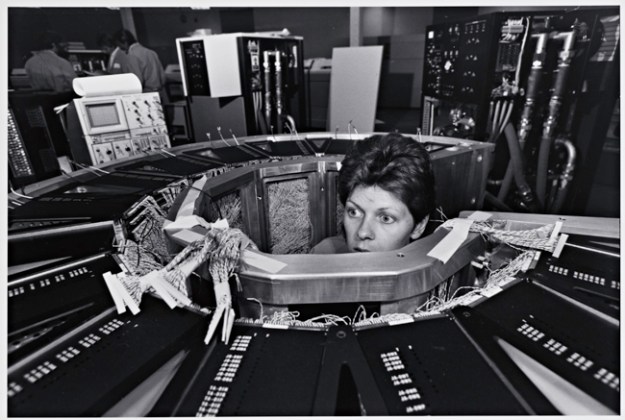
When we think of supercomputers, we forget that there are real men and women who painstakingly put these extraordinary machines together, one wire at a time. In a new exhibit at Stanford University’s Cantor Arts Center entitled, “Lee Friedlander: The Cray Photographs,” you can get a glimpse of the people and town that put Cray supercomputers together in 79 black-and-white photographs shot by Lee Friedlander.
Known for his “straight-forward documentation of ordinary things,” according to the museum’s announcement about the exhibit, Friedlander was invited by the former top supercomputer producer Cray Research in 1986 to capture its company in photos for a book celebrating its 15th anniversary.
Cray’s founder, Seymour Cray, was born in Chippewa Falls, Wisconsin, which is why his company’s research and manufacturing facilities were based in the small Midwestern town. The famed American photographer took a series of photos that juxtaposed small town living with the high-tech work that Cray employees were doing inside the company headquarters.

As you can see in these sample photos from the exhibit, Friedlander hardly romanticized what it was like to work in the high-tech industry of building supercomputers 27-years ago. Back in the day, supercomputers were taller than people and looked like an endless mess of wires. According to New Scientist, Cray supercomputers were known for, “[being] cylindrical towers to shorten wires – coaxing [the] machines to clock up unprecedented speeds.”
The photographer seemed particularly fascinated by the women with suburban hairstyles that worked at Cray, who were chosen by the founder to wire these gigantic supercomputers for their “dexterity and talent in weaving and other fabric crafts,” according to the Cantor Arts Center.

You can relive a bit of American high-tech history that preceded Silicon Valley by visiting this exhibit at the Cantor Arts Center at Stanford University. The “Lee Friedlander: The Cray Photographs” exhibit opened March 27 and will close June 16.


